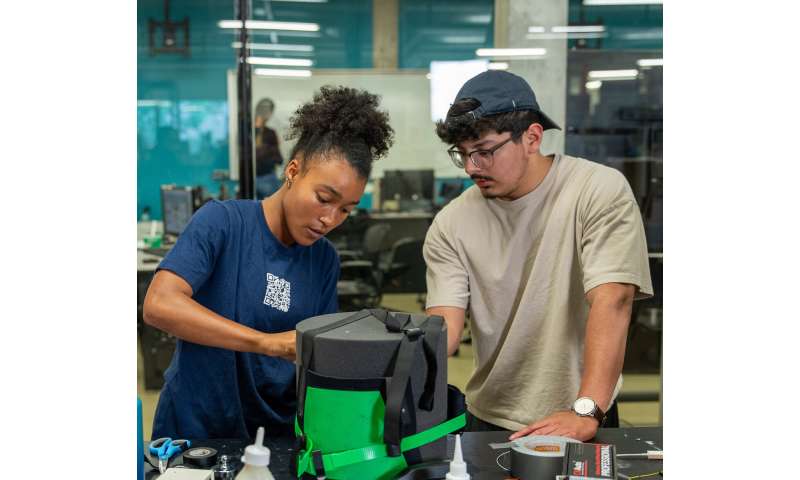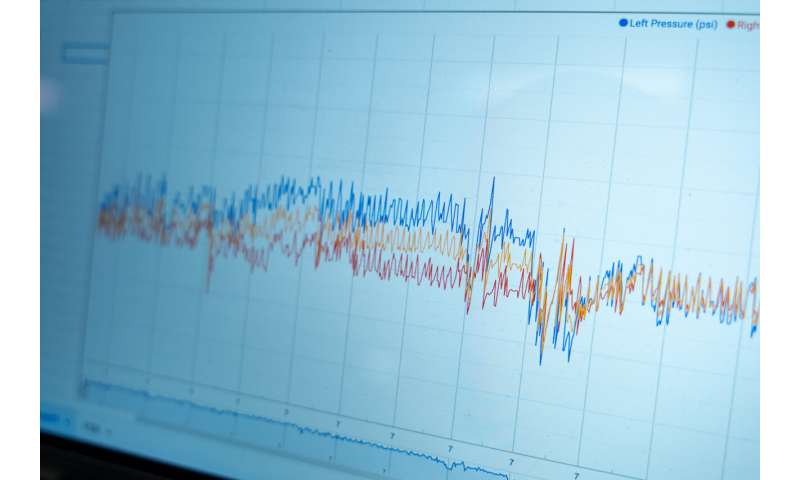This article has been reviewed according to Science X's editorial process and policies. Editors have highlighted the following attributes while ensuring the content's credibility:
fact-checked
trusted source
proofread
Low-profile design could aid treatment of rib flaring—and patients' mental health

Body image can have a significant impact on a person's life, especially in their youth.
For those suffering from rib flaring associated with congenital deformations of the chest wall that cause it to jut out or cave in, a team of Rice University engineering students has come up with a potential solution.
Pectus carinatum and pectus excavatum are conditions in which a person is born with their breastbone protruding outward or sunken inward, respectively. There are treatments available, but for many patients—predominantly those ages 12-20—they cause rib flaring, a condition in which the lower ribs at the front of the rib cage protrude outward.
"Because these conditions occur mainly in patients with ages between 12-20, this affects their body image, social life, etc., at a crucial time in their development," said Jaden Roberts, a member of the Pectus Reparatum team along with Jose Castillo, Shelby DesRoches and Brandon Zimmer.
For some patients with pectus carinatum, wearing a brace helps reshape the chest over time. Those with pectus excavatum, on the other hand, often require surgical intervention. Post-surgery, many still have to contend with rib flaring.
Pediatric surgeon Dr. Mark Mazziotti at Texas Children's Hospital hoped to expand the industry-standard brace's therapeutic potential to the treatment of rib flaring. However, the brace is bulky and adds to the discomfort and insecurity associated with the condition, causing many patients to not wear it.
"This helped us set a goal," DesRoches said. "We were thinking about this bracing mechanism they were already using and we drew inspiration from that brace design to create one that patients would be more compliant using that would effectively treat rib flaring."
The team designed a low-profile, cost-conscious brace called "the cartilage corrector" as its capstone design project, which will be part of Rice's George R. Brown School of Engineering's signature design showcase and competition April 13 at the Ion.
"The main feature we wanted to improve upon with our design is providing self-adjustability for the user," Roberts said. "With the current brace, you can't adjust the pressure being applied yourself. Instead, you have to go into your doctor's office and have them adjust it for you, and then you're stuck with that fit until the next visit, which can be months or even one or two years later."
The team also wants to make it possible for doctors to track the pressure being applied over time in order to assess treatment effectiveness and optimize plans based on individual needs.
"The electronic system for our device will provide accurate data such as time-tracking in conjunction with pressure measurements," Castillo said. "Measurement values will be saved to an SD card and can then be transferred to a computer and read on a graph."
-

Shelby DesRoches and Jose Castillo fit their brace onto a foam torso model. Credit: Brandon Martin/Rice University -

The brace captures pressure levels as it is worn, data physicians can use to design personalized treatment plans. Credit: Brandon Martin/Rice University
The data collected could provide information about what level of pressure is effective over a given length of time.
The team, which is mentored by bioengineering assistant teaching professor Sabia Abidi, hopes to show the brace to some of Mazziotti's patients and get their feedback.


















